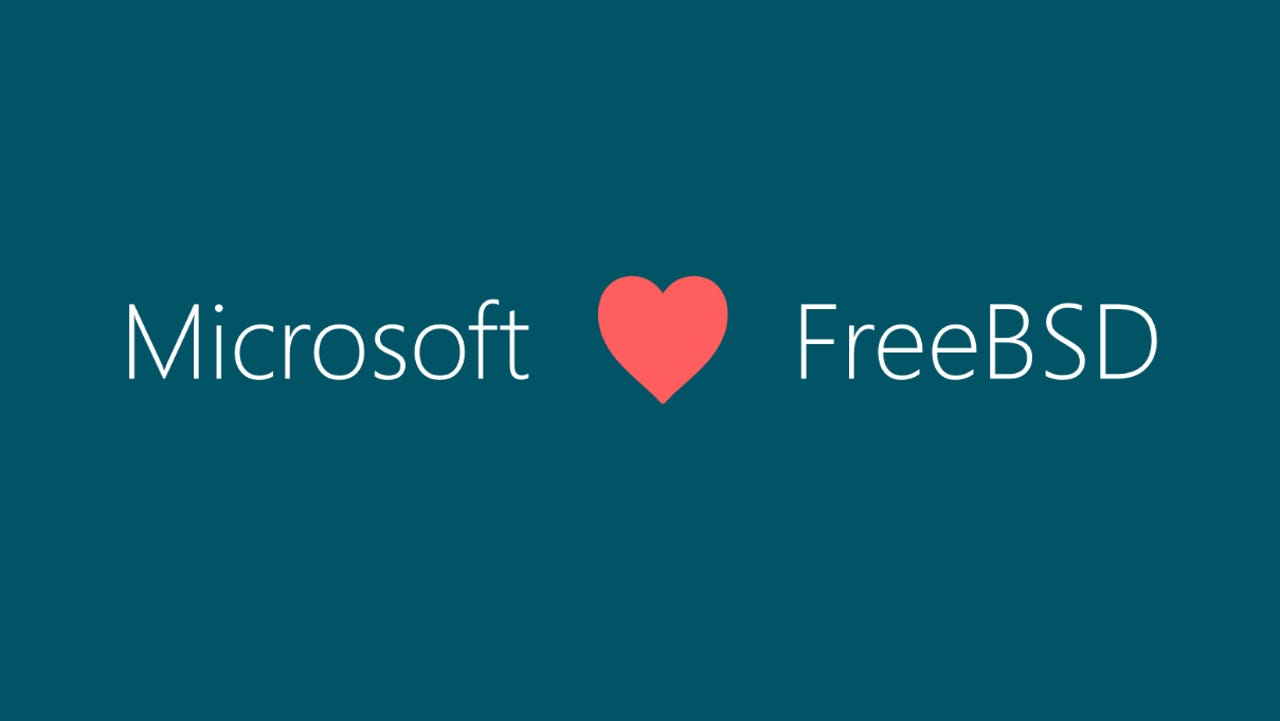Microsoft loves FreeBSD so much it has made its own VM image for Azure


Microsoft creates its own FreeBSD VM image for Azure
Microsoft has released FreeBSD 10.3 as a "ready made" VM image on the Azure marketplace.
The release will make it easier for customers to spin-up a FreeBSD VM in Azure and it means that customers can get official support from Microsoft engineers when necessary.
Until now, the only way for customers to run FreeBSD in Azure was to use a custom image from elsewhere. Now Azure customers can simply launch FreeBSD from the Azure marketplace. The image is published by Microsoft rather than the FreeBSD Foundation.
Microsoft said it was important that FreeBSD runs on Azure because many top-tier virtual appliance vendors base their products on the operating system.
The new "ready-made" FreeBSD VM for Azure extends Microsoft's earlier work in making sure FreeBSD production workloads can run in Hyper-V with official support from Microsoft.
Likewise, a key reason Microsoft built its own FreeBSD 10.3 image was to ensure customers have an enterprise service level agreement (SLA) for FreeBSD VMs in Azure. And, according to Microsoft, to alleviate the support burden on the FreeBSD Foundation.
"In order to ensure our customers have an enterprise SLA for their FreeBSD VMs running in Azure, we took on the work of building, testing, releasing and maintaining the image in order to remove that burden from the Foundation. We will continue to partner closely with the Foundation as we make further investments in FreeBSD on Hyper-V and in Azure," said Jason Anderson, Principal PM Manager at Microsoft's Open Source Technology Center.
Additionally, Anderson notes that Microsoft had already done a lot of work to support appliance vendors, many of which use FreeBSD, bring their virtual appliances to the Azure Marketplace. Microsoft's previous work on supporting FreeBSD on Hyper-V was aimed at ensuring appliance partners' kit functioned smoothly in Azure, which uses Hyper-V.
Justin T. Gibbs, President of FreeBSD Foundation welcomed Microsoft's effort as a "significant milestone" for the FreeBSD community.
According to Anderson, with the exception of a few bug fixes, the majority of Microsoft's work on the FreeBSD kernel was up-streamed into the FreeBSD 10.3 release, benefiting those who download the image from the FreeBSD Foundation.
That's similar to what Microsoft did when delivering integration service components for Hyper-V to FreeBSD, which were included in the latest release of the operating system. Microsoft explains that this was feasible because, unlike Linux, which has multiple distributions based on the Linux kernel, FreeBSD Foundation maintains the kernel as well as associated drivers and libraries.
Microsoft will continue contributing to the FreeBSD, earmarking performance on storage as one area of work, as well as more Hyper-V features.
"Our intent is to stay current and make available the latest releases shortly after they are released by the FreeBSD Release Engineering team," wrote Anderson.